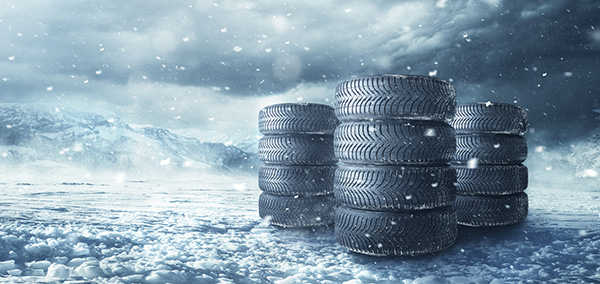
Cold mornings have a way of revealing little problems, and tires are near the top of that list. You might see the dashboard light pop on, feel the steering a bit heavier, or notice the car wandering more than usual. None of this is random. Lower temperatures change the air inside your tires and the rubber that meets the road.
A few quick checks can keep you safe and help your tires last through the season.
Why Tire Pressure Drops When Temperatures Fall
Air contracts as it gets colder. For every 10 degrees the temperature drops, tire pressure can fall by about one PSI. If your tires were already a little low, that overnight chill can push them below the recommended number. The result is a warning light in the morning that sometimes disappears once the tires warm up while driving.
That warmup effect does not fix the baseline problem. If the set pressure is low, the tire will be underinflated again the next time it gets cold. The simplest habit is to check and adjust pressures during cold weather about once a month, or any time a major temperature swing hits.
What Low Pressure Does to Handling and Wear
Underinflated tires flex more at the sidewalls. That flex creates extra heat and rolling resistance, which hurts fuel economy and can make the vehicle feel sluggish. Steering response gets duller, and braking distances can increase on wet or snowy pavement. Over time, low pressure wears the outer shoulders faster than the center, which shortens tire life.
There is a safety angle, too. A soft tire can overheat at highway speeds, especially if it is carrying extra weight. Keeping the set pressure aligned with the door placard helps the tire carry load correctly and keeps the tread in full contact with the road.
Cold Weather Changes Rubber Grip and Ride
Tire rubber stiffens in low temperatures. A stiffer tread block does not conform to road texture as easily, which can reduce grip on cold, dry pavement. On all-season tires, the compound is designed to handle a wide range of conditions, but performance still drops as the thermometer dips.
If you drive regularly in snow and ice, winter tires make a noticeable difference. Their softer compounds stay flexible in the cold, and their tread patterns are cut to bite into snow. Even on cold, clear days, that flexibility helps the tire follow the road and maintain traction.
TPMS Questions in Winter
It is common for the tire pressure light to turn on during the first cold snap of the season. The system is doing its job by flagging low pressure, but it cannot tell you why the pressure dropped. If the light clears after driving, you still need to add air to reach the correct cold pressure number.
A flashing TPMS light at startup points to a sensor problem rather than a simple pressure issue. If you see a flashing light or one tire never shows a stable reading, have the system checked. A quick test can confirm whether the sensor battery is weak or the system needs to be relearned after a rotation or tire replacement.
How Much Air to Add and When to Check
Use the pressure shown on the driver door placard, not the number molded into the tire sidewall. That placard accounts for the vehicle’s weight balance, suspension, and intended load. Check pressures when the tires are cold, meaning the car has been parked for at least three hours or driven less than a couple of miles.
A few quick winter habits go a long way:
- Keep a reliable gauge in the glovebox and check pressures monthly.
- Add one or two PSI above the placard only if your driveway temps are much lower than typical daytime temps, which helps offset the morning drop.
- Recheck after the first long cold spell, and again after any major temperature swing.
Uneven Wear Can Point to Problems Beyond Pressure
Cold weather exposes weak points that were already developing. Feathered edges or cupping often signal alignment or suspension issues. Shoulder wear can be simple, low-pressure, but it can also point to aggressive cornering or incorrect rotation intervals. Vibrations at specific speeds may indicate a tire balance problem or a bent wheel from a hidden pothole strike.
If you notice a pull to one side, a steering wheel that is not centered, or rapid wear on a single tire, it is time for an inspection. Fixing those issues early preserves the new set you just bought and keeps winter handling predictable.
Tire Service and Cold-Weather Checks in Yakima
If your pressure light will not stay off, the steering feels different, or the tread is wearing unevenly, a quick tire check can prevent bigger problems. Adjusting pressures, inspecting tread and sidewalls, and checking balance and alignment gives you confidence before the next cold snap. Reliable tires turn winter driving from stressful to manageable.
Stay Safe This Winter with Westside Car Care in Yakima, WA
Westside Car Care can set pressures correctly for winter temps, test your TPMS, inspect tread wear, and align the vehicle so it tracks straight on icy mornings. If you need winter tires, a rotation, or a simple pressure check, we are ready to help.